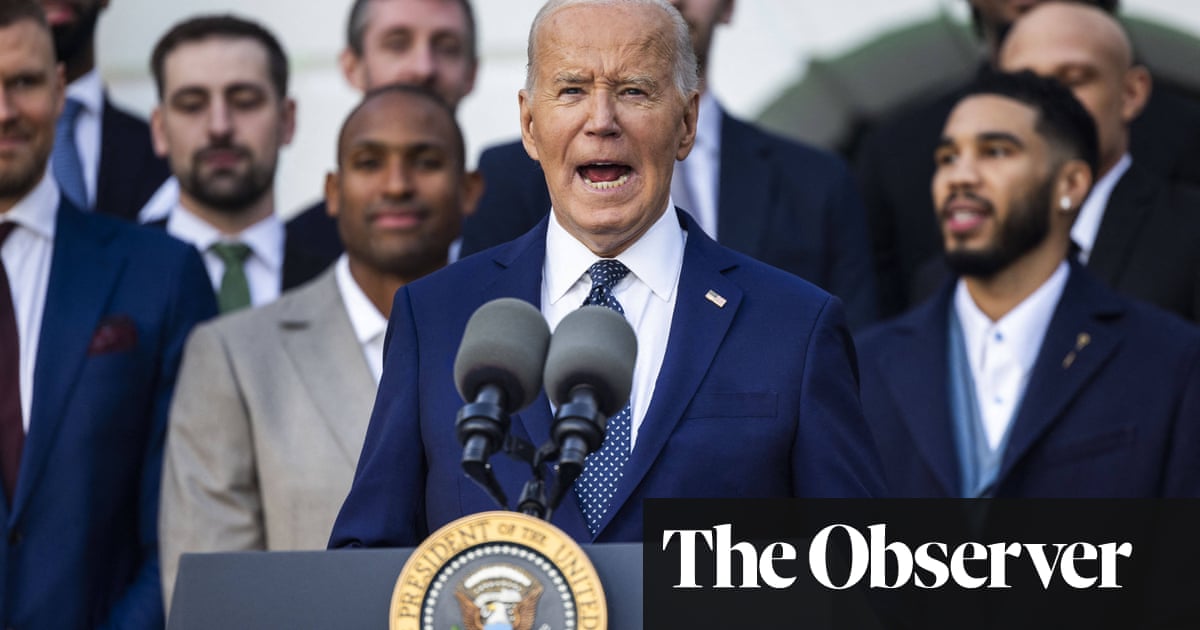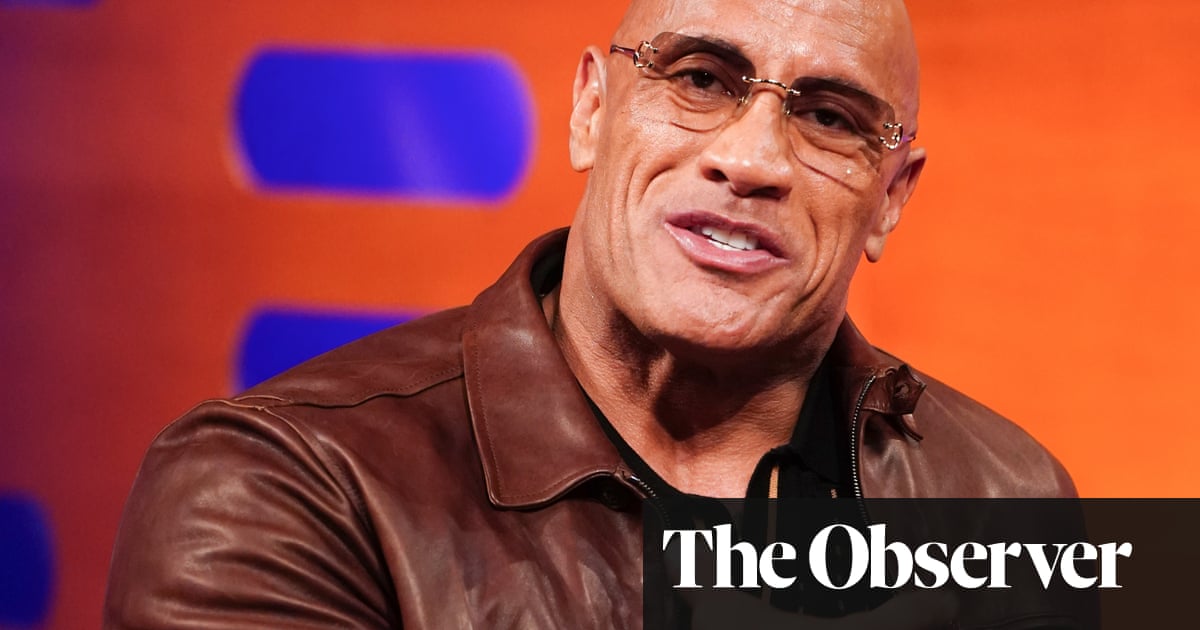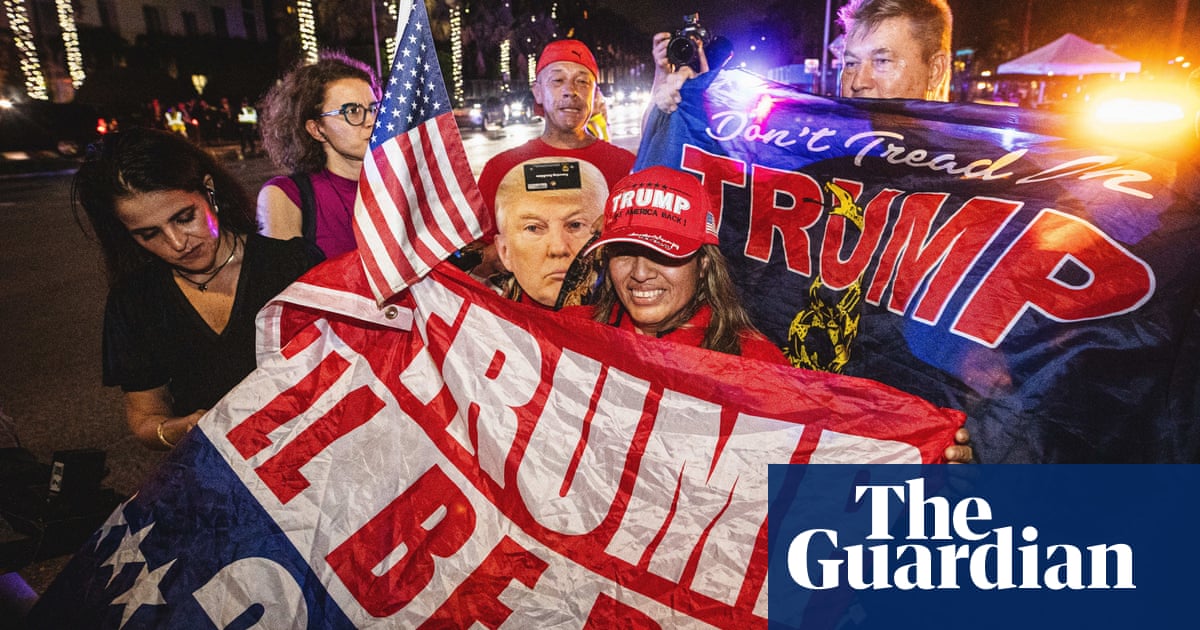Tens of millions of voters went to the polls in America on Tuesday, see-sawing between anxiety and hope, to send one of the closest and most consequential presidential elections hurtling towards an uncertain finish.
The Democrat Kamala Harris and her Republican opponent, Donald Trump, appeared locked in a knife-edge contest with hardly any daylight between the pair in national opinion polls that have barely budged in weeks.
From coast to coast, in sprawling cities and small towns, in churches and school gyms, people waited patiently in line to play their part in the world’s most powerful democracy and choose between two sharply different visions for America. They mostly encountered a smooth process, with isolated reports of hiccups including long queues, technical issues and ballot printing errors.
Harris, 60, was among more than more than 82m who people voted early, having mailed her ballot to California. From her vice-presidential residence in Washington, now secured by 8ft-high metal fences, she conducted phone interviews with radio stations in battleground states. Harris then took part in a phone bank event at the Democratic National Committee headquarters.

epa11703124 People queue outside a polling station in Philadelphia, Pennsylvania, USA, 05 November 2024. Voters nationwide are participating in the 2024 US presidential election, deciding in a closely contested race between Republican candidate Trump and Democratic candidate, US Vice President Harris. Philadelphians are also voting in key Senate and Congressional races on Election Day. EPA/DAVID MUSE Photograph: David Muse/EPA
Trump, 78, voted on Tuesday near his Mar-a-Lago club in Palm Beach, Florida, and said he was feeling “very confident”. Wearing a red “Make America great again” cap, he told reporters: “It looks like Republicans have shown up in force.” The former president said he had not prepared a speech about the outcome, adding: “I’m not a Democrat. I’m able to make a speech on very short notice.”
Trump has been told by some advisers that he should prematurely declare victory on election night if he is sufficiently ahead of Harris in battleground states such as Pennsylvania, according to people close to him. Meanwhile the New York Times reported that Elon Musk, the world’s richest man, who has spent at least $119m in support of Trump, would watch the results with him at Mar-a-Lago.
After billions of dollars in spending and months of frenetic campaigning in seven crucial swing states – Michigan, Wisconsin, Pennsylvania, Arizona, Nevada, Georgia and North Carolina – the candidates appeared deadlocked. Recent polling has been unable to discern a clear pattern or advantage for either Harris or Trump in this electoral battleground, though most experts agree that whoever wins the Rust belt state of Pennsylvania is likely to have a clear advantage.
Robert Brady, the Democratic party chair in Philadelphia, the biggest city in Pennsylvania, said turnout at polling stations was “extremely high” and that “is great for us”. But elsewhere in the state Tiana Peters, a 39-year-old Democrat from Allentown, voted for Trump. “The last four years, nothing really good happened,” she said. “Giving away free money to the people that can’t afford houses, financially that doesn’t work, you know.”

It is the swing states that will decide the election because, under the complex American political system, the result is decided not by the national popular vote but an electoral college in which each state’s number of electors is weighed roughly by the size of its population.
Each candidate needs 270 votes in the electoral college to clinch victory, and the battleground is formed of those states where polls indicate a state could go either way. Democrats have won the popular vote in seven of the past eight presidential elections but lost out to George W Bush and Trump in the electoral college.
The result may not be quickly known. With polling so tight, full results in the crucial swing states are unlikely to be available on Tuesday night and may not even emerge on Wednesday, leaving the US on tenterhooks as to who may emerge as America’s next president.
That will only fuel jitters in foreign capitals where the election is being watched closely. Harris would be likely to follow Joe Biden’s foreign policy playbook, focusing on alliances and maintaining the defence of Ukraine, where victory for Trump’s “America first” ethos would boost rightwing populists in Europe and elsewhere.
Tuesday’s election brought the curtain down on a remarkable and historic election campaign that deeply divided American society and upped the stress levels of many of its citizens amid warnings of civil unrest, especially in a scenario where Harris wins and Trump contests the result.
Harris put together a whirlwind campaign in just over a hundred days after 81-year-old Biden stepped aside. She is bidding to become the first woman, first Black woman and first woman of south Asian descent to be elected president but, unlike Hillary Clinton in 2008, she downplayed the historic nature of her candidacy.
She centred her campaign on the autocratic threat that Trump represents. In her final big signature event, Harris staged a rally of 75,000 supporters on the Ellipse in Washington – the spot where Trump helped encourage his supporters to attack the Capitol on 6 January 2021.
“On day one, if elected, Donald Trump would walk into that office with an enemies list. When elected, I will walk in with a to-do list full of priorities on what I will get done for the American people,” Harris told the crowd.
Harris’s campaign has tried to represent a page turning on the Trump era and threat of his return to the White House. She has acknowledged that calling Trump a fascist is a fair reflection of his political beliefs and the intentions of his movement, while insisting that she represents a choice that will serve all sides of America’s deeply fractured political landscape.
after newsletter promotion

The vice-president has also emphasised reproductive freedom in the first presidential election since the supreme court, with three Trump appointees, ended the constitutional right to abortion. Opinion polls suggest a record gender gap, with men backing Trump and women supporting Harris.
Trump, meanwhile, would be the oldest president ever elected. He would also be the first defeated president in 132 years to win another term in the White House, and the first person convicted of a crime to take over the Oval Office.
He ran a campaign fuelled by a deep sense of grievance, both personal, at his legal travails, and the perception among many of his supporters of an ailing America that is under threat from the Democrats.
That sense of victimhood has been fueled by lies and conspiracy theories that have baselessly painted Biden and Harris as far-left figures who have wrecked the American economy with high inflation and an obsession with identity politics.
The former president told supporters “I am your retribution” and threatened to prosecute political foes, journalists and others. He also suggested turning the US military against what he calls “the enemy from within”.
Trump put immigration and border security at the heart of his campaign pitch, painting a picture of America as overrun with crime caused by illegal immigration with language that has often veered into outright racism and fearmongering. He has referred to undocumented immigrants as “animals” with “bad genes” who are “poisoning the blood of our country”.
Read more of the Guardian’s 2024 US election coverage
During the campaign, Trump vowed to replace thousands of federal workers with loyalists, impose sweeping tariffs on allies and foes alike and stage the biggest deportation operation in US history.
The huge divisions between the two campaigns and the language used by candidates – especially Trump and his allies – have led to widespread fears of violence or unrest as voting day plays out and especially as the count goes on. In the run-up to election day, ballot drop boxes used for early voting were destroyed in several US states.
Jocelyn Benson, the Michigan secretary of state, told the Washington Post newspaper: “There is the potential for small flare-ups throughout our state and other states – little fires everywhere. Collectively they could become a massive firestorm that is more difficult to contain because the embers have been burning throughout the nation.”
At the same time, however, it was Trump himself who was the subject of two assassination attempts during the campaign. At a rally in Pennsylvania, an assassin’s bullet grazed his ear and at a golf course in Florida, a gunman lay in wait for an ambush, only to be foiled by an eagle-eyed Secret Service agent before he could open fire. Neither shooter seemed coherently politically motivated or definitively aligned with one side or another.
Tuesday would not decide the presidency alone. All 435 seats in the House of Representatives were up for grabs, along with 34 of the 100 seats in the Senate. Thirteen state and territorial governorships and numerous other state and local elections were also taking place. Ten states including Arizona, Colorado and Florida had abortion-related measures on the ballot.
Additional reporting by Sam Levine in Allentown, Pennsylvania and Hugo Lowell in West Palm Beach, Florida

 German (DE)
German (DE)  English (US)
English (US)  Spanish (ES)
Spanish (ES)  French (FR)
French (FR)  Hindi (IN)
Hindi (IN)  Italian (IT)
Italian (IT)  Russian (RU)
Russian (RU)  2 weeks ago
2 weeks ago
























Comments